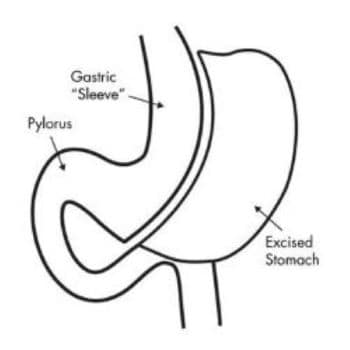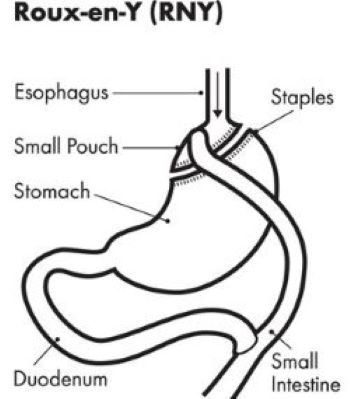Types of Weight Loss Surgery

Becoming a Healthier You
If you are obese, bariatric surgery can help you achieve and maintain a healthy weight when you make lifestyle changes.
According to Erik Simchuk, M.D., bariatric surgery gives you another chance at life. “There is no other operation I know of that — with one procedure — can bring such profound results, curing many medical conditions at once,” he said. “People usually see a dramatic change quickly in both their medical and mental health."
Without weight loss surgery, the long-term success rate if you suffer from morbid obesity is less than 5%. Learn about the advantages of minimally invasive surgery in this video.
Enloe Health caregivers offer these two surgical options to help you achieve your weight loss goals:
- Vertical sleeve gastrectomy
- Roux-en-Y gastric bypass
Vertical Sleeve Gastrectomy

During a vertical sleeve gastrectomy (sometimes called a “gastric sleeve”), your care team will remove part of your stomach, making it look like a sleeve. This causes you to lose weight by:
- Making your stomach smaller
- Reducing the calories you consume
- And making you less hungry
This weight loss surgery is usually done laparoscopically. This means your care team will make several small incisions and work through those, rather through one large incision.
Roux-en-Y Gastric Bypass

![]()
![]() During a Roux-en-Y gastric bypass, your care team will create a small pouch at the top of your stomach and connect it directly to your small intestine. This causes you to lose weight by:
During a Roux-en-Y gastric bypass, your care team will create a small pouch at the top of your stomach and connect it directly to your small intestine. This causes you to lose weight by:
- Making your stomach smaller
- Causing food to bypass a part of your small intestine
- And reducing the number of calories your body absorbs
This weight loss surgery is usually done laparoscopically. This means your care team will make several small incisions and work through those, rather through one large incision.
Your care team will discuss these options and recommend the best one for you, so you can succeed after bariatric surgery.